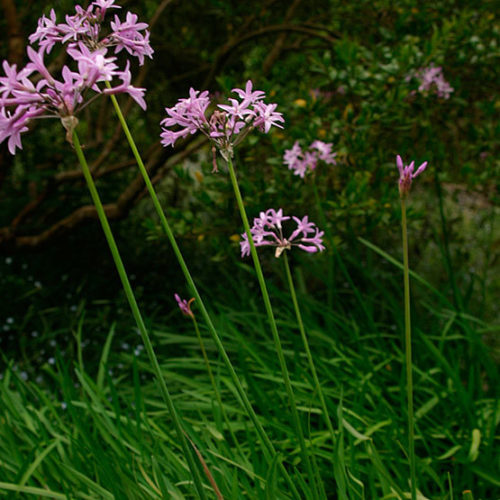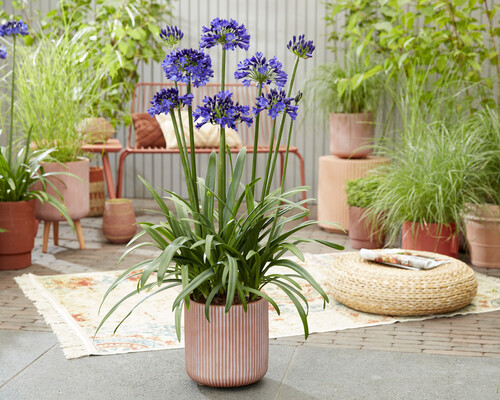Agapanthus Companion Plant Kingdoms: Perfect Pairings for Your Yard
Agapanthus Companion Plant Kingdoms: Perfect Pairings for Your Yard
Blog Article
Understanding the Art of Agapanthus Treatment: Important Actions for Healthy Development and Lively Blooms
In the world of cultivation, the cultivation of agapanthus stands as a gratifying endeavor for those that look for to nurture these elegant flowering plants. With their striking blossoms and elegant foliage, agapanthus has captured the interest of gardeners worldwide. However, accomplishing optimal growth and lively blossoms needs a nuanced method that encompasses numerous essential actions. From selecting the right variety to understanding trimming methods, the trip in the direction of cultivating growing agapanthus plants is complex and holds the crucial to opening the complete capacity of these herb gems.

Selecting the Right Agapanthus Range

When picking the right Agapanthus variety for your garden, think about factors such as climate viability, blossom shade, and development routine. Agapanthus, generally referred to as Lily of the Nile or African lily, comes in a selection of shades varying from shades of blue and purple to white. Select a bloom shade that complements your existing garden combination to produce a harmonious landscape. In addition, consider the environment in your area to make certain the Agapanthus variety you select can prosper in your details conditions. Some varieties are a lot more tolerant of cold temperatures, while others favor warmer environments. Comprehending the development routine of various Agapanthus ranges is essential for correct positioning within your yard. Some ranges have a clumping growth habit, perfect for borders or containers, while others have a more spreading nature, suitable for ground cover or mass growings. By carefully evaluating these variables, you can select the excellent Agapanthus selection to improve the beauty of your yard.
Perfect Growing Conditions
Considering the optimal ecological needs is necessary for successful Agapanthus cultivation. Agapanthus plants are sensitive to cold temperature levels and need to be shielded from frost during winter months.
To ensure healthy development and vivid flowers, plant Agapanthus bulbs at a depth of about 2-4 inches and area them 8-12 inches apart. Adding raw material, such as compost, to the soil can enhance drain and fertility, advertising durable root growth. Mulching around the base of the plants assists maintain wetness and suppresses weed development. Normal watering is crucial, specifically throughout the growing season, to maintain the dirt constantly damp but not waterlogged.
Watering and Fertilizing Tips
Keeping appropriate moisture degrees and offering crucial nutrients are vital components in the treatment regimen for Agapanthus plants. When it comes to watering Agapanthus, it is crucial to strike an equilibrium. If overwatered, these plants prefer constantly moist dirt but are susceptible to root rot. Throughout the expanding season, water deeply once a week, ensuring the soil is well-draining to avoid waterlogging. In hotter environments or throughout periods of dry spell, more regular watering may be needed to maintain the see this website soil uniformly damp. Nonetheless, minimize watering in the wintertime to avoid water logged problems.
Fertilizing Agapanthus is essential for advertising healthy growth and prolific blooms. Apply a balanced fertilizer, such as a 10-10-10 formula, in the early springtime as new development arises. By adhering to these watering and feeding suggestions, you can guarantee your Agapanthus plants prosper and generate vivid, long-lasting blooms.
Trimming Strategies for Agapanthus
Pruning Agapanthus plants at the ideal times and with appropriate methods is critical for preserving their health and advertising ideal growth and blooming. The ideal time to trim Agapanthus is in late wintertime or very early springtime prior to brand-new growth emerges. Start by removing any type of yellowing or dead leaves near the base of the plant. Cut them as close to the ground as possible without harming the emerging shoots.
Deadheading invested flowers can additionally reroute the plant's power into generating more flowers rather than establishing seeds. If you want to gather seeds for propagation, leave some blossoms to fully grown and dry on the plant.
Remember to utilize clean, sharp tools to make accurate cuts and reduce click reference the risk of introducing diseases. Agapanthus. Routine pruning will help maintain your Agapanthus looking healthy and balanced and neat while guaranteeing a bountiful display screen of beautiful blossoms
Handling Common Parasites and Illness
After making certain proper pruning strategies for Agapanthus, it is vital to deal with typical bugs and diseases that can influence the health and vigor of these plants. One typical pest that impacts Agapanthus is the Agapanthus gall midge.
One more usual issue is fungal leaf spot, which offers as dark sores on the leaves. To avoid fungal diseases, ensure good air blood circulation around the plants, avoid above watering, and get rid of any kind of contaminated leaves immediately. In addition, Agapanthus plants can struggle with root rot if they are planted in inadequately draining pipes dirt. To prevent this, plant Agapanthus in well-draining dirt and stay clear of overwatering. By being vigilant and taking timely activity against insects and illness, you can help your Agapanthus plants prosper and produce dynamic blooms.

Conclusion
In conclusion, grasping the art of agapanthus care includes picking the ideal variety, providing suitable growing problems, appropriate watering and feeding, appropriate pruning methods, and addressing common pests and diseases. By complying with these necessary actions, you can make certain healthy and balanced development and vivid flowers for your agapanthus plants. Remember to routinely keep an eye on and maintain your plants to promote their overall health and longevity.
To guarantee healthy and balanced development and vivid flowers, plant Agapanthus bulbs at a depth of regarding 2-4 inches and area them 8-12 inches apart. By following these watering and fertilizing suggestions, you can guarantee your Agapanthus plants thrive and generate dynamic, resilient flowers.
One usual pest that affects Agapanthus is the Agapanthus gall midge. In addition, Agapanthus plants can endure from origin rot if they are planted in inadequately draining soil. By adhering to these essential actions, you can guarantee healthy growth and vibrant blooms for useful source your agapanthus plants.
Report this page